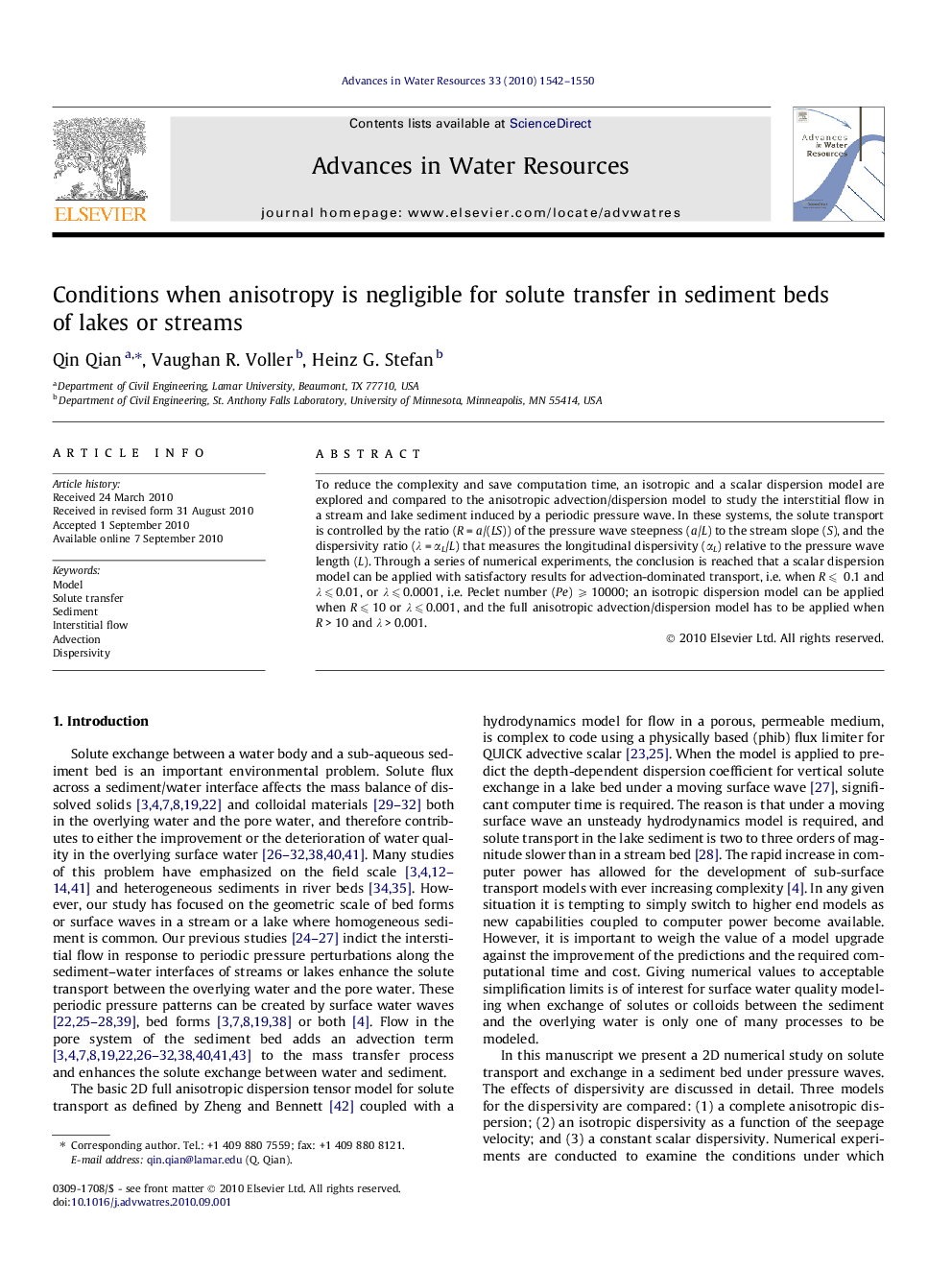| Article ID | Journal | Published Year | Pages | File Type |
|---|---|---|---|---|
| 4526192 | Advances in Water Resources | 2010 | 9 Pages |
To reduce the complexity and save computation time, an isotropic and a scalar dispersion model are explored and compared to the anisotropic advection/dispersion model to study the interstitial flow in a stream and lake sediment induced by a periodic pressure wave. In these systems, the solute transport is controlled by the ratio (R = a/(LS)) of the pressure wave steepness (a/L) to the stream slope (S), and the dispersivity ratio (λ = αL/L) that measures the longitudinal dispersivity (αL) relative to the pressure wave length (L). Through a series of numerical experiments, the conclusion is reached that a scalar dispersion model can be applied with satisfactory results for advection-dominated transport, i.e. when R ⩽ 0.1 and λ ⩽ 0.01, or λ ⩽ 0.0001, i.e. Peclet number (Pe) ⩾ 10000; an isotropic dispersion model can be applied when R ⩽ 10 or λ ⩽ 0.001, and the full anisotropic advection/dispersion model has to be applied when R > 10 and λ > 0.001.
Research highlights► Water quality modeling. ► Mass transport. ► Interaction between surface and ground water.
